
SAS' Jordan Leiker shows you how any CAS action can be used with image data to create heat maps.

SAS' Jordan Leiker shows you how any CAS action can be used with image data to create heat maps.
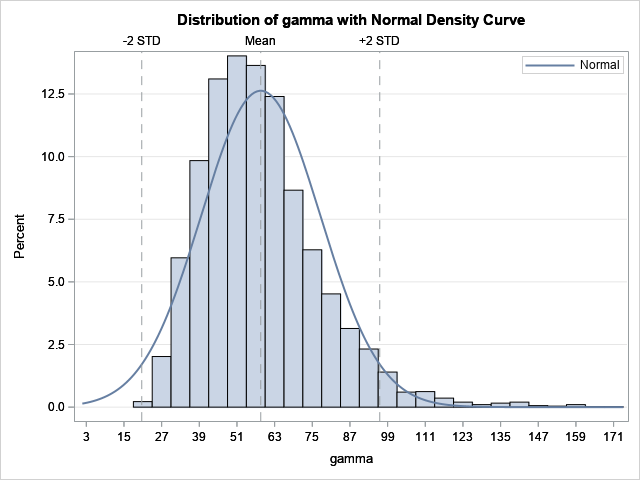
In The Essential Guide to Bootstrapping in SAS, I note that there are many SAS procedures that support bootstrap estimates without requiring the analyst to write a program. I have previously written about using bootstrap options in the TTEST procedure. This article discusses the NLIN procedure, which can fit nonlinear
기업의 골든타임을 지켜준다는 것은 신속하게 인사이트를 확보한다는 것이며, 신속하다는 것은 바로 ‘접근 및 활용이 쉽다’라는 것을 의미합니다. 여러분의 업무와 일상생활에서 ‘골든타임’은 어떤 것이 있을까요? 우리가 잘 알고있는 골든타임으로, 심장쇼크가 왔을 때 심폐소생술을 수행하는 4분의 골든타임, 비행기가 비상착륙했을 때 승객을 대피시켜야하는 90초의 골든타임, 그리고, 회사의 이슈가 발생했을 때 위기대응을 시작해야하는 15분의

We recently passed the two-year anniversary of US school closures that transformed schooling for students, teachers and parents. The pandemic induced the largest remote learning experiment in history. But, lack of time to prepare for remote education and unequal internet and device access left many students unserved or underserved. It was
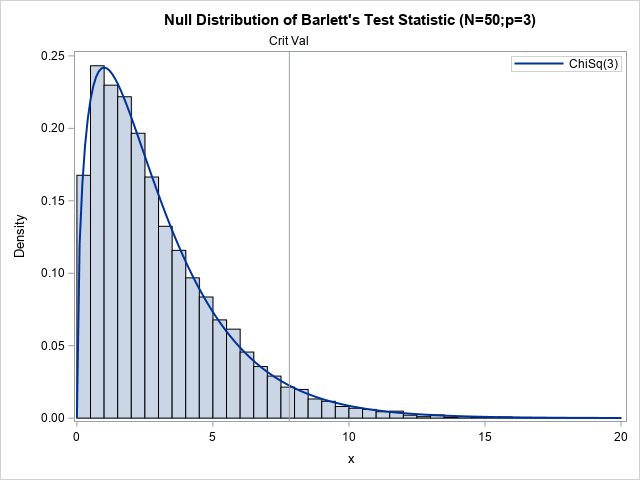
Recently, I wrote about Bartlett's test for sphericity. The purpose of this hypothesis test is to determine whether the variables in the data are uncorrelated. It works by testing whether the sample correlation matrix is close to the identity matrix. Often statistics textbooks or articles include a statement such as
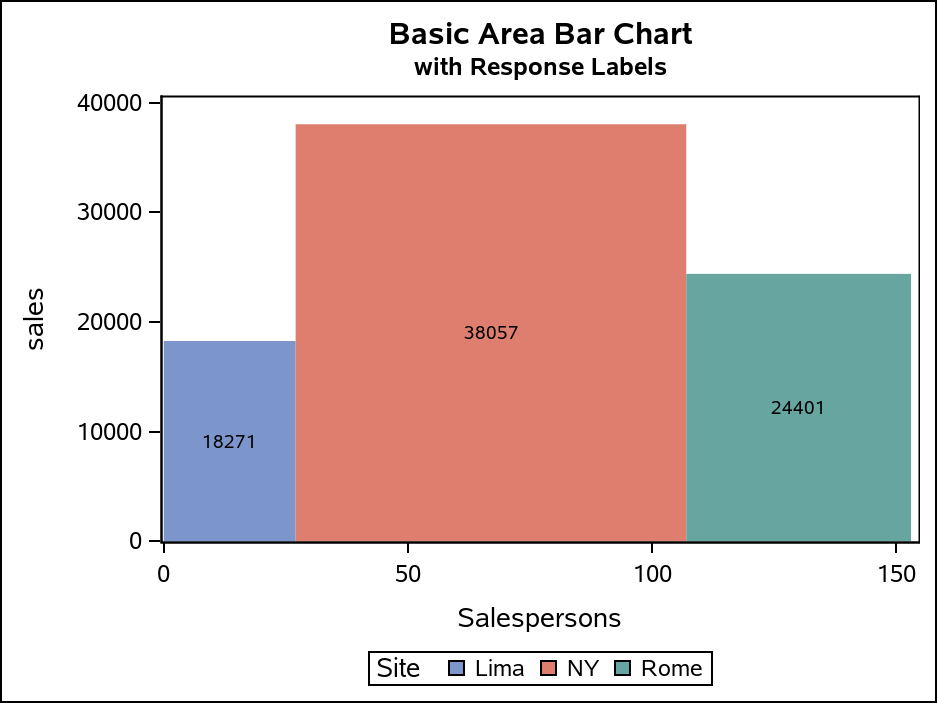
The SGPLOT procedure supports a wide variety of plot types that you can use directly or combine together to create more complex graphs. Even with this flexibility, there might be times you run across a graph that you cannot create using one of the standard plot types. An "area" bar

You read “First COVID case reported in America” on your phone, not thinking much of it. Why should you, it’s just a regular day in January 2020, right? A couple months later, the world drastically changes. While we have all learned a lot since then, a question that still boggles

SAS' Hamza Ghadyali reveals how to build computer vision solutions with privacy baked into their design.

When you have many correlated variables, principal component analysis (PCA) is a classical technique to reduce the dimensionality of the problem. The PCA finds a smaller dimensional linear subspace that explains most of the variability in the data. There are many statistical tools that help you decide how many principal

はじめに 近年サステナビリティ経営は多くの分野で注目されています。環境・社会の変化や価値観の変革に対応しながら、長期にわたり市場から求められ、継続的に価値提供を行い、社会から信頼され続けることが企業にとって最も重要と考えられています。 最近では、気候変動、COVID-19パンデミックなどの社会環境の変動により、生活者、消費動向、企業活動、サプライチェーンなどに大きな影響を及ぼす中で、どのように対応し取り組んでいくかが喫緊の課題となっています。 今回のブログでは、これらの変化対して持続可能な世界を実現するための「サステナビリティ経営」に関してSASのアナリティクスアプローチをテーマに数回にわたり見ていきたいと思います。 SDGsとESG 地球規模の課題を踏まえた全世界共通の持続可能な成長戦略であるSDGsは、今や大企業の多くがサステナビリティ経営*1の計画にマテリアリティ(重要課題)として織り込み取り組まれています。また、環境・社会・ガバナンスの観点で企業活動を分析評価するESG*2は、企業価値を見通す上での重要性として認識されています。 アナリティクスが果たす役割 環境や社会で起こっている多くの変化は、生活者の価値観および消費活動に変化をもたらします。企業は、その変化を的確に捉え迅速に対応していくことが求められます。それらの変化を近年のデジタル・テクノロジーを用いて迅速に把握し、AIやアナリティクスによるインサイトに基づく意思決定や課題解決、商品やサービスの継続的な改善や高度化などにより新たな価値を提供することは、企業のサステナビリティと競争力を創出し、サステナビリティ経営において非常に重要となります。 中長期計画のマテリアリティとして掲げられたSDGsの達成度評価やESG評価においてもアナリティクスの手法を用いた評価手法やツールが多く用いられ、企業活動の見える化を推進するとともに、投資家などへ開示することでESG投資を促すとともに、企業価値向上や創造を進めています。SASは、AIによるESG管理とレポート作成に関するサービスを提供しています。 また、企業や組織の活動においても、AIやアナリティクスによるインサイトや予測といったデータ利活用をもとに、CO2削減、エネルギー対策、フードロス削減、水資源保全、汚染軽減など様々なサステナビリティに関する課題解決に向けて、アナリティクスが活用されています。*3*4 SASの取り組み SASは自社のCSR活動として、エネルギー節約、GHG(温室効果ガス)排出管理、汚染軽減、水保全、グリーンビルディング、およびその他のプログラムにより環境を改善などに取り組んでいます。また、サステナビリティ経営のリーダーおよび提唱者として、高度なテクノロジーと経験豊富なスタッフにより、多くのソフトウエア、ツール、サービスなどを企業や組織に提供してきています。これらは追って紹介いたします。今回はSASのCSRレポート*5から抜粋してSASの取り組みをいくつか紹介します。 アナリティクスによる人道支援/社会支援 ビッグデータアナリティクスが世界中の短期および⾧期の開発⽬標の達成に役立つという広範な証拠があります。アナリティクスの世界的リーダーとして、SASは、貧困、病気、飢餓、⾮識字などの社会の最⼤の問題のいくつかを解決するために、最先端のテクノロジーと専⾨知識を適⽤することに情熱を注いでいます。 SASは、常により良い世界を構築するためにそのテクノロジーを使⽤することを挑戦しています。国連のSDGsが不平等を減らし、健康的な⽣活を確保するために取り組んでおり、SASはそれがすべての⼈にとってより明るい未来を創造するのを助けることができる機会を探しています。 SASの社会イノベーションイニシアチブは、世界の進歩を加速させ、世界をより持続可能な未来に向けて動かす創造的な⽅法の発見を支援します。 SASがこの⽬標をサポートする⽅法の1つは、 Data for Goodを推進する運動です。貧困、健康、⼈権、教育、環境に関する⼈道問題を解決するために有意義な⽅法でデータを使⽤することを奨励します。 ⾼度なアナリティクスとIoTによる健康なミツバチの個体数の増加 World Bee Countを使用すると、ミツバチのデータをクラウドソーシングして、地球上のミツバチの個体数を視覚化し、これまでのミツバチに関する最大かつ最も有益なデータセットの1つを作成できます。 SASのデータ視覚化により、クラウドソーシングされたミツバチや他の花粉交配者の場所が表示されます。 プロジェクトの後の段階で、研究者は作物の収穫量、降水量、その他のハチの健康に寄与する要因などの重要なデータポイントを重ね合わせて、世界の花粉交配者のより包括的な理解を集めることができます。 Joseph Cazier, アパラチア州立大学分析研究教育センター教授兼常務理事 ミツバチを救うことは私たちの⾷糧供給にとって最も重要であり、⾼度なアナリティクスがミツバチと私たちの未来を維持するための鍵となる可能性があります。 SASのモノのインターネット(IoT)、機械学習、視覚アナリティクス機能により、健康なミツバチの個体数の維持とそのサポートができる可能性があります。 2020年、SASは、テクノロジーが世界中の花粉交配者の個体数を監視、追跡、改善する3つの別々のプロジェクトに参加しました。まず、SASのデータサイエンティストは、聴覚データと機械学習アルゴリズムを通じて、侵入しないで蜂の巣のリアルタイムの状態を監視する⽅法を開発しました。 SASはまた、世界のミツバチの数についてアパラチア州立⼤学と協力して、世界のミツバチの個体数データを視覚化し、それらを保存するための最良の⽅法を抽出しました。さらに、SAS Viya Hackathonの受賞者は、機械学習を通じてハチのコミュニケーションを解読し、⾷料へのアクセスを最⼤化し、⼈間の⾷料供給を増やしました。 困っている⼈を助けるための最善のサポートを理解する 私たちの優先事項は、人生の最も困難な季節を通して家族を支援することです。その仕事の多くは、目に見えないところに隠れているホームレスを支援することです。それが私たちの最善の策です。SASは私たちの目の前でデータを取得し、以前は見ることができなかった隠された洞察を発見することができました。それはSASが最も得意とすることです。正直なところ、完璧な組み合わせでした。 Leslie Covington, Executive Director, The Carying Place ホームレスに苦しんでいる多くの人は、自給自足できるための指導と支援を求めてThe Carying Place(TCP)に目を向けます。 手書きのドキュメントと一貫性のないスプレッドシートの山の中に27年分のデータがあるため、TCPはSASを利用して、参加者の成功の指標をより適切に測定し家族にふさわしい支援を提供しました。 SASボランティアは、デモグラフィック、保険、住宅、退役軍人のステータス、障害のステータス、予算ファイルなど、参加している家族のデータを分析し、TCPのニーズを最もよくサポートできるモデルを選択しました。

Outliers provide much-needed insights into the actual relationships that influence the demand for products in the marketplace. They are particularly useful when modeling consumer behavior where abnormalities are common occurrences or unforeseen disruptions that impact consumer demand. But why do demand planners cleanse out outliers, when many are not really

As companies continue to amass zettabytes of data, the talent hunt for data scientists who can create clarity out of all the noise, has never been greater. But one of the greatest challenges a data scientist faces is communicating the uncovered insights wrangled from the relevant data to decision-makers. To
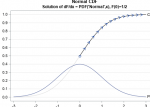
To a numerical analyst, numerical integration has two meanings. Numerical integration often means solving a definite integral such as $$int_{a}^b f(s) , ds$$. Numerical integration is also called quadrature because it computes areas. The other meaning applies to solving ordinary differential equations (ODEs). My article about new methods for solving
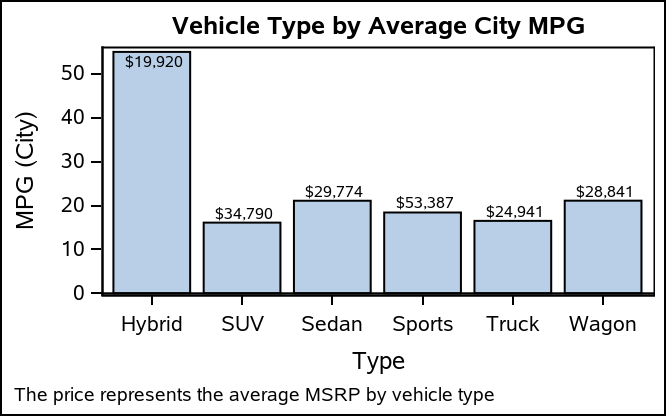
When creating bar charts, it is very common to display labels with the bars to make it easier to determine the bar values or to provide additional information in the chart. However, these labels can take away valuable data space, particularly if you generate a smaller-sized graph. As you see

Leaders from businesses and governments across the world continue to show progress on a range of critical environmental topics, addressing climate resilience and taking actions to ensure a more sustainable and thriving planet. Advancements and innovations continue to open new avenues for environmental leadership – and the use of data

In the second of two Q&As with R&D colleagues, SAS' Udo Sglavo provides a window into how we approach drug-development challenges with machine learning.

Before I started with SAS, I worked at the San Bernardino County Department of Behavioral Health. Among many other projects, our analytics work included integrating data from multiple county departments and risk stratifying citizens in the greatest need of public services. This led to our 1115 Whole Person Care (WPC) waiver
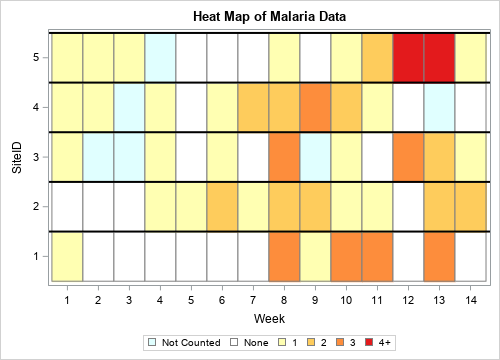
Recently, I showed how to use a heat map to visualize measurements over time for a set of patients in a longitudinal study. The visualization is sometimes called a lasagna plot because it presents an alternative to the usual spaghetti plot. A reader asked whether a similar visualization can be

Babeș-Bolyai University (UBB) is the largest and highest-ranked university in Romania. Its Faculty of Economics and Business Administration (FSEGA) is the largest faculty at any university in Romania. It is also the highest-ranked institution in the country for management and business and top-ranked for economics. The faculty was founded as
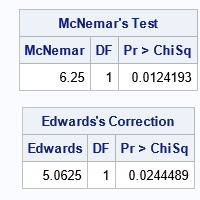
What is McNemar's test? How do you run the McNemar test in SAS? Why might other statistical software report a value for McNemar's test that is different from the SAS value? SAS supports an exact version of the McNemar test, but when should you use it? This article answers these

Data visualization is a critical way for anyone to turn endless rows of data into easy-to-understand results through dynamic and understandable visuals. Whether your favorite visualization is a pie chart, a geographic map or relies on natural language, showing the insights that empower you to make more informed decisions is a better way to do data-driven business. Analyst firms say that SAS has market-leading data visualization. This helps users across the globe find insights in their data using new and exciting trends in data visualization.

A note from Udo Sglavo: At SAS, what we deliver to our customers is a product of creative minds thinking differently, challenging the norm, taking risks, and learning from trial and error (The greatest teacher, failure is). For the return of World Creativity & Innovation Week, we want to share

It’s important to recognize the power that an idea can have. When looking back at the most amazing discoveries and inventions in the world, we must remember that ideas and dreams are what started them all. At SAS, we believe in dreaming big and bold. When we do this, creativity thrives.

Jim Goodnight, SAS founder and CEO, said in 2016, "Digital disruption is now a fact of life, and every organisation must have a plan to deal with it." And yet his observations could not be more apt today. Furthermore, the impacts of the global pandemic have accelerated digital disruption. I see
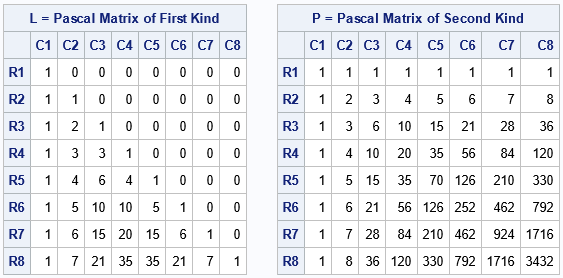
Some matrices are so special that they have names. The identity matrix is the most famous, but many are named after a researcher who studied them such as the Hadamard, Hilbert, Sylvester, Toeplitz, and Vandermonde matrices. This article is about the Pascal matrix, which is formed by using elements from

See how our customers are using analytics to cut carbon emissions while achieving other business goals.
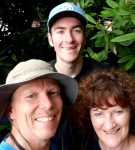
When most of us see an abandoned mobile home, we see just that: an abandoned mobile home. But when Cindy Turner, Sr. Communications Specialist, sees an abandoned mobile home, she sees something different: opportunity. Cindy’s Big Idea “I kept seeing more and more about the lack of affordable housing in
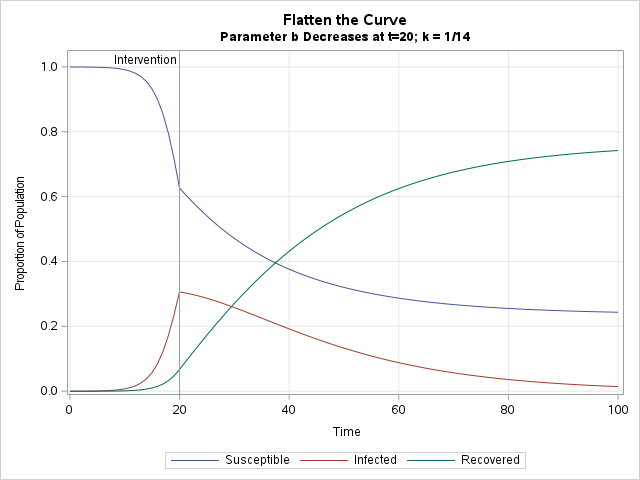
Many discussions and articles about SAS Viya emphasize its ability to handle Big Data, perform parallel processing, and integrate open-source languages. These are important issues for some SAS customers. But for customers who program in SAS and do not have Big Data, SAS Viya is attractive because it is the
SAS EG 常見問題集 SAS EM 常見問題集 Q: SAS 程式(SAS 9.4) 繁體中文出現亂碼怎麼辦? A: 主要發生原因是因為近期 Windows 作業系統更新, [解法] 請至控制台 > 地區設定,將” Beta: 使用 Unicode UTF-8 提供全球語言支援” 選項取消勾選,避免亂碼問題。

When Los Angeles County invested in Whole Person Care (WPC) it could not have known just how important the system’s flexibility would be. Anyone who has had an interface with health care delivery, policy, oversight and management know things change quickly. As data becomes a priority, expectations of the use